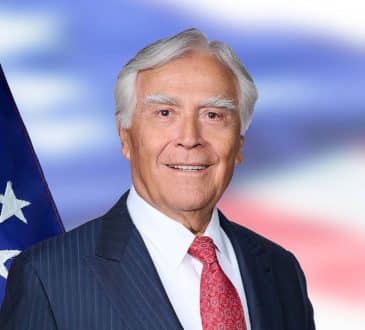The Cure for Constant Remote Work Request

You open your email and your stress level spikes: it’s another email titled “Can I work from home tomorrow?” It’s one of several you received in the last month: a relentless march of requests for remote work that ask for one-off exceptions to your policy. So, what’s the deal? This constant barrage isn’t just a logistical headache. It’s a flashing red warning light, signaling a deeper issue. Your employees aren’t buying into your company’s remote work policy. Something is wrong, and it’s causing you a lot of stress. This is a problem you need to take charge of, immediately.
These requests signify a disconnect between the company’s vision of the workplace and the employees’ lived experience. Your people are telling you something, and it is your job to listen. Ignoring these requests, dismissing them as mere grumbling, will damage morale. It is essential to understand this. Your employees are the lifeblood of your organization. Their voices deserve to be heard, their concerns addressed. The key is to understand the “why” behind the relentless requests. Only then can you hope to bridge the gap and create a workplace that works for everyone.
Uncovering the ‘Why’: Getting to the Heart of Remote Work Requests
So, how do you uncover the “why?” You dig deeper. You engage. You listen. Start with a well-crafted, anonymous remote work survey. A survey is your first line of inquiry, a way to gather broad data and identify trends. Ask direct questions: “What are your biggest challenges with the current work arrangement?” “What aspects of remote work do you find most appealing?” “What concerns do you have about working in the office?” Use both quantitative, multiple-choice questions to gather data, and qualitative questions to get longer, richer responses.
But a survey alone is not enough. You need to understand the human element, the emotions driving these preferences. This is where focus groups come in.
Focus groups offer a chance to build on the survey and move beyond the numbers and into the realm of lived experience. Imagine a small group of employees, representing various departments and roles, gathered in a safe space, ready to share their thoughts and feelings. A skilled facilitator guides the conversation, teasing out the nuances, the unspoken concerns, the individual stories behind the data points. Prior to the focus group, a skilled facilitator would use the survey responses to create a discussion guide for the focus groups, thus requiring less time and effort to extract the key data.
It’s in these sessions that you’ll uncover the real reasons behind the remote work resistance. Perhaps employees feel isolated and disconnected when working in the office. Maybe they are struggling to balance work and family commitments. Maybe they’re more productive at home. Or, perhaps, your company’s current policy is genuinely out of sync with the realities of the modern workplace. You need to get to the bottom of these feelings.
Just as important as getting the data, both the survey and focus groups combine to make your employees feel heard. They will know you spent time and effort listening to them, hearing them, and respecting them. They will feel heard, which will prove key for the next step, of addressing employee concerns.
Addressing Employee Concerns Effectively to Address Remote Work Requests
Once you have this rich, qualitative data, you’re ready to act. You’ve listened, you’ve understood, and now you can respond effectively. This might mean reaffirming your current policy, but with a crucial difference. Now, you can justify it from a place of empathy and understanding.
You can say, “We hear you. We understand your concerns about commute times and work-life balance. Here’s why our current policy is structured the way it is, and here are the reasons it makes sense in the context of your concerns.” You will very likely find that offering clear explanations for current policies, informed by the survey and focus groups, can build trust with employees, creating more buy-in into the existing policies.
Just as important as getting the data, both the survey and focus groups combine to make your employees feel heard. They will know you spent time and effort listening to them, hearing them, and respecting them. They will feel heard, which will prove key for the next step, of addressing employee concerns.
Let me share a real-world example. I was brought in as a consultant to help a mid-sized law firm struggling with this very issue. They had a policy of three days in the office, two days remote. Still, the requests for exceptions kept flooding in. We conducted a survey and followed up with focus groups. The results were illuminating. Many attorneys felt the three-day requirement was arbitrary. They valued the flexibility of remote work, particularly for focused, heads-down tasks. However, they also acknowledged the importance of in-person collaboration for certain aspects of their work, such as complex negotiations and mentoring junior staff. The focus groups revealed a desire for more autonomy in managing their schedules, within the framework of the existing policy.
After considering the matter in a partner retreat, the leadership reaffirmed their commitment to the three-day in-office policy. However, they did so while acknowledging the employees’ desire for flexibility. The firm’s managing partner communicated to all attorneys the rationale behind the policy, emphasizing the value of in-person collaboration for specific tasks, while also highlighting the firm’s trust in employees to manage their time effectively during remote days. They also made some minor adjustments, allowing for more flexibility on which two days attorneys chose to work remotely. This approach showed the attorneys that their concerns had been heard and that the firm had a good reason for its policy, while also being willing to make adjustments. A survey showed a 20% increase in satisfaction with the firm’s remote work policy after the end of the project.
Consider a Policy Overhaul
However, be prepared for the possibility that your current policy might need an overhaul. The data might reveal that a more flexible model is more suitable for your workforce. Be open to the possibility that employees are asking for remote work because they genuinely feel it will be more productive for them. And that it will benefit the company as a result. The key is to approach this process with an open mind and a willingness to adapt.
I faced a different scenario with an accounting firm. They were struggling to retain talent and had a strict policy of full-time in-office work. After a survey and focus groups, it became clear that the policy was a major source of dissatisfaction. The employees, particularly younger staff, valued work-life balance and felt they could be just as productive, if not more so, working remotely. They wanted more autonomy and flexibility.
The firm’s leadership listened carefully to this feedback. They took a bold step and empowered individual teams to decide how and when they should come into the office. The results were remarkable. Morale improved significantly, and the firm saw a 10% boost in productivity and 26% increase in employee retention over the next six months. This flexible approach also helped them attract top talent in a competitive market.
Building a Future-Ready Workplace: Embracing Trust
The workplace is evolving. The old models are crumbling, and new paradigms are emerging. The companies that thrive will be those that trust their employees. The constant requests for remote work are not a threat. They are an opportunity. They are a chance to build a better workplace, a more productive, more engaged, and more fulfilling environment for everyone.
Remember, your employees are not just cogs in a machine. They are human beings with complex needs and desires. By listening to their concerns, by understanding their motivations, you are not just solving a logistical problem. You are building a stronger, more resilient organization.
So, take a deep breath. Dive into the data. Engage in meaningful conversations. And emerge with a remote work policy that reflects the needs of your people and the demands of the future. Your employees will appreciate it. Your bottom line will benefit. And you’ll be leading the charge towards a future-ready workplace. This is your chance to shine as a leader, to demonstrate that you are not just managing a workforce but cultivating a community.
Have you read?
Countries with the most gold reserves.
World’s Best Public Relations Agencies (Top PR Firms).
Countries with the highest human freedom.
World’s Safest & Most Dangerous Countries For Travelers.
Longest and Shortest Life Expectancies in the World.
Bring the best of the CEOWORLD magazine's global journalism to audiences in the United States and around the world. - Add CEOWORLD magazine to your Google News feed.
Follow CEOWORLD magazine headlines on: Google News, LinkedIn, Twitter, and Facebook.
Copyright 2025 The CEOWORLD magazine. All rights reserved. This material (and any extract from it) must not be copied, redistributed or placed on any website, without CEOWORLD magazine' prior written consent. For media queries, please contact: info@ceoworld.biz








